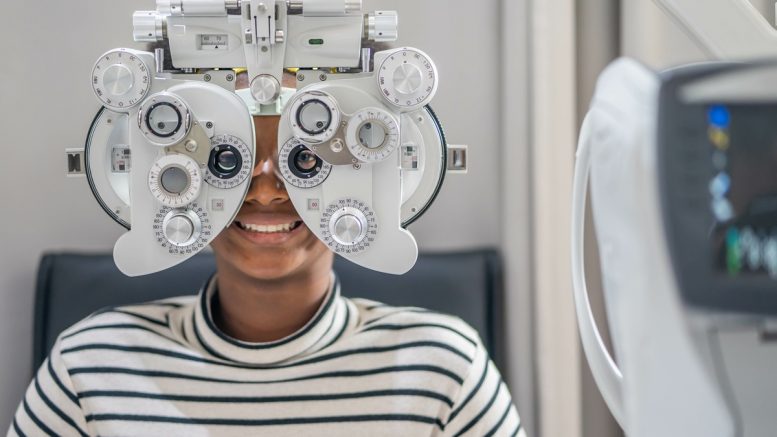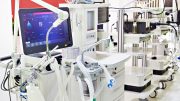Myopia, also known as short-sightedness, is a global public health concern. Why is this the case? Because it is the leading cause of vision impairment and the second-highest cause of blindness. [1] It is predicted that nearly five billion people – half of the global population – will become myopic by 2050. [2] Children are feeling the biggest impact of myopia. However, many are still unaware of the condition or the need for treatment.
We need to urgently address this global vision health gap and coordinate efforts to protect children’s sight. Governments, public health bodies, academia, and industry must collectively act now and join forces to improve awareness, education, and early detection of myopia and make it a global priority.
We need to act now to raise myopia awareness
Children are developing myopia at increasingly younger ages. [3] Although not life-threatening, myopia can be life-limiting and have a significant impact on quality of life, education, work, and beyond – both physically and psychologically. For example, imagine not being able to read the classroom board in school, which can have a massive impact on learning and development. It’s no surprise that myopia can cause anxiety and a lack of self-confidence in children. [4]
As these children move into adulthood, untreated myopia can make the simplest task difficult or even impossible. Having worked in ophthalmology on refractive devices myself, I have seen first-hand the daily challenges those with undetected myopia face.
Today, we can slow or stop myopia progression [5] through improving awareness and education, delivering vision-first policies that promote healthy behaviours, creating more opportunities for early detection, and leveraging the latest technological innovations to treat and manage the condition.
Collaboration to close the vision health gap
I imagine a world where no child is impacted by myopia. To close the vision health gap and deliver this future, we, as an industry, must work in partnership with the public and private sectors. We must ensure that governments, policymakers, and public health bodies act now to educate parents, teachers, and caregivers on myopia symptoms and methods of prevention or slowing progression. We also need to devise better ways to highlight the urgent need to improve access to regular eye screening and treatment, as well as to invest in technological solutions to prevent and manage myopia. With new technological advances and innovations such as artificial intelligence-powered eye exams, we could even predict myopia development before problems arise. [6]
Change needs a clear focus on the chain of care delivery and stronger collaboration between public and private sectors; at HOYA Vision Care, we work closely with health organisations, educational institutions, universities, research centers, and directly with Eye Care Professionals. This collaboration allows us to take insights and learnings to apply to our work and help to highlight key issues, provide training and resources, and create actionable change. Unfortunately, there is a lack of tools, funding, and resources needed to facilitate earlier diagnosis and intervention, and so we must work together to act now and prioritise vision care and prevention. Through representation at key events such as the Global Health Summit, we are raising the flag for children with myopia worldwide by calling for this deeper collaboration.
By combining policy initiatives with technological advancements, we can enhance prevention efforts, increase awareness of myopia, and mitigate its burden.
Technological advances are changing outcomes in myopia care
Continued innovation is crucial to increase equitable access to treatment for all and ultimately improve outcomes. There has been a drive to control myopia in clinical practice by utilising technological advancements to stem its progression. [7] Newer innovative wearable technologies, such as HOYA’s MiYOSMART spectacle lenses with Defocus Incorporated Multiple Segments (D.I.M.S) technology, mean that Eye Care Professionals can offer unintrusive solutions for slowing myopia progression.
It is essential to ensure the healthcare ecosystem understands that these technological solutions exist and to educate on how these innovations provide short- and longer-term efficiencies, prevent complications, and improve clinical and patient outcomes. We also aim to provide the necessary training and tools to support its uptake and meet the public health needs for effective myopia control. [8]
Why acting now will shape the future of vision care
No one should underestimate the importance of early myopia diagnosis on a child’s wellbeing. The healthcare ecosystem must act collectively upon awareness and education to ensure people understand how myopia can impact children’s quality of life. Correcting and managing children’s vision early can enable them to live fuller lives.
At HOYA Vision Care, we are committed to collaborating for improved awareness and understanding, access to vision care, and global prioritisation of vision-forward health policies. By working together, we can ensure a vision-forward future for all.
By Alexandre Montague, Chief Executive Officer, HOYA Vision Care
References
| [1] | E. Thomson, “Short-sightedness – or myopia – in children is on the rise: What can be done?,” World Economic Forum, November 2022. [Online]. Available: https://www.weforum.org/agenda/2022/11/short-sightedness-cases-rising-globally. [Accessed: July 2024]. |
| [2] | B. A. Holden, et al., “Global Prevalence of Myopia and High Myopia and Temporal Trends from 2000 through 2050,” Ophthalmology, vol. 123, no. 5, p. 1036–42, 2016. |
| [3] | M. Zomorodi, et al., “The story behind soaring myopia among kids,” npr, 17 October 2023. [Online]. Available: https://www.npr.org/2023/10/17/1200611635/the-story-behind-soaring-myopia-among-children. [Accessed: July 2024]. |
| [4] | D. Li, et al., “Impact of Vision Impairment and Ocular Morbidity and Their Treatment on Depression and Anxiety in Children,” Ophthalmology, vol. 129, no. 10, p. 1152–70, 2022. |
| [5] | C. Siu Yin Lam, et al., “Defocus Incorporated Multiple Segments (D.I.M.S.) spectacle lenses slow myopia progression: a 2-year randomised clinical trial,” Br J Ophthalmol, vol. 98, p. 363–8, 2020. |
| [6] | M. J. Barraza-Bernal, et al., “Prediction of refractive error and its progression: a machine learning-based algorithm,” Global Ophthalmology, vol. 8, p. e001298, 2023. |
| [7] | N. A. Brennan, et al., “Efficacy in myopia control,” Prog Retin Eye Res, vol. 83, p. 100923, 2021. |
| [8] | S. McCrann, et al., “Is optometry ready for myopia control? Education and other barriers to the treatment of myopia,” HRB Open Res, vol. 2, p. 30, 2019. |





